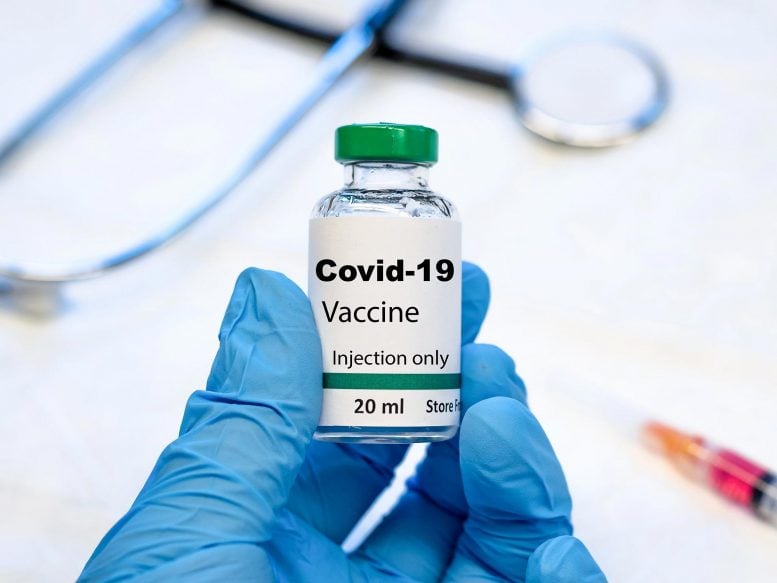
- First full results from interim analysis confirm that the Oxford COVID-19 vaccine (AZD1222) has an acceptable safety profile and is efficacious against symptomatic COVID-19 disease, with no hospitalizations or severe disease reported in the COVID-19 vaccine group so far
- First clinical efficacy results of the vaccine are based on a pre-specified pooled analysis of phase 3 trials in UK and Brazil (11,636 people), alongside safety data from a total of 23,745 participants in 4 trials in the UK, Brazil and South Africa
Interim results of the Oxford COVID-19 vaccine trials find that the vaccine protects against symptomatic disease in 70% of cases — with vaccine efficacy of 62% for those given two full doses, and of 90% in those given a half then a full dose (both trial arms pre-specified in the pooled analysis). The results are the first full peer-reviewed efficacy results to be published for a COVID-19 vaccine, and are published in The Lancet.
The vaccine was found to be safe, with only three out of 23,745 participants over a median of 3.4 months experiencing serious adverse events that were possibly related to a vaccine; one in the vaccine arm, one in the control arm, and one in a participant who remains masked to group allocation. All participants have recovered or are recovering, and remain in the trial.
Study author, Dr. Merryn Voysey, University of Oxford, UK, says: “The results presented in this report provide the key findings from our first interim analysis. In future analyses, with more data included as it becomes available, we will investigate differences in key subgroups such as older adults, various ethnicities, doses, timing of booster vaccines, and we will determine which immune responses equate to protection from infection or disease.”[1]
Study lead author Professor Andrew Pollard, University of Oxford, UK, says: “Control of the pandemic will only be achieved if the licensing, manufacturing and distribution of these vaccines can be achieved at an unprecedented scale and vaccination is rolled out to those who are vulnerable. Our findings indicate that our vaccine’s efficacy exceeds the thresholds set by health authorities and may have a potential public health impact.”[1]
The Oxford COVID-19 vaccine uses a chimpanzee adenovirus viral vector that cannot cause disease in humans and expresses the SARS-CoV-2 spike protein. This means the vaccine delivers the spike protein genetic code into vaccinated people’s cells, which then produce the protein, and teaching the immune system to recognise and attack the virus. Past trial results have found that the vaccine induces antibody and T cell immune responses, and is safe in adults aged 18 years and over, including older adults.[2]
For the new study, the authors analysed data from 23,745 adults in the UK, Brazil and South Africa (11,730, 10,002, and 2,013 in each country, respectively). The interim analysis published today pools the data from these for analysis, providing greater precision for efficacy and safety outcomes than possible in individual trials and giving a broader understanding of the use of the vaccine in different populations.[3]
In the trial, half of the participants were given the COVID-19 vaccine and the other half given a control (either a meningococcal conjugate vaccine or saline).[4] The trial was originally designed to assess a single dose of the vaccine, but following review of the immune response data in the UK phase 1/2 study (which found a second dose boosted immune responses) another dose was added to the trial protocol, then, once approved, second doses were given to participants.
Participants in the COVID-19 vaccine group received two doses each containing 5×1010 viral particles (a standard dose). However, a subset (1,367 people) in the UK received a half dose as their first dose, followed by a full second dose. This was because of differences in the results of quantification methods between batches of the vaccine. The low-dose/standard-dose group did not include adults over the age of 55 years as the low-dose was given in an early stage of the trial before recruitment of older adults had commenced.
The authors used the numbers of cases of symptomatic and asymptomatic infection to determine vaccine efficacy.
Overall, most participants were aged 18-55 years (82%,19,588/23,745) as people aged 56 years and older were recruited later and will be studied in future analyses of the trial. In the 11,636 people included in the vaccine efficacy against symptomatic disease analysis, 12% (1,418/11,636 people) were older adults and most were white (83%, 9,625/11,636 people).
Findings from the trial safety data
Safety was monitored for a median of 3.4 months in all 23,745 participants from the UK, Brazil and South Africa. Out of 23,745 participants, 168 experienced a total of 175 severe adverse events over the period, but 172 events were unrelated to the COVID-19 or control vaccines. One event was in the control group (a case of haemolytic anaemia), one event was in the COVID-19 vaccine group (a case of transverse myelitis considered possibly related to the vaccine), and a case of severe fever (> 40oC) was reported in South Africa in a participant who remains masked to group allocation and recovered rapidly without an alternative diagnosis and was not hospitalized. All three participants have recovered or are recovering, and continue to be part of the trial.
Safety monitoring of all participants in the trial continues.
Vaccine efficacy against symptomatic COVID-19 disease
The primary outcome of the study was to determine how many cases of symptomatic COVID-19 disease (confirmed by positive test, and the participant having a fever, cough, shortness of breath, or loss of smell or taste) there were in participants who had received two doses of the vaccine (with the first dose being either low or standard dose, and the second dose being standard dose), compared with controls. Only cases that occurred 14 days after the second vaccination had been given were included (11,636 participants in the UK and Brazil trials).
There were 131 cases of symptomatic COVID-19 disease more than 14 days after the second vaccine dose in these 11,636 people. This included 30/5,807 (0.5%) cases in the vaccine group and 101/5,829 (1.7%) cases in the control group, which equates to a vaccine efficacy of 70%.
When breaking this down based on vaccine dose, those who received two standard doses of the vaccine saw a vaccine efficacy of 62% (based on 27/4,440 (0.6%) cases in the vaccine group, and 71/4,455 (1.6%) cases in the control group), and the low-dose/standard-dose group vaccine efficacy was 90% (based on 3/1,367 (0.2%) cases in the vaccine group, and 30/1,374 (2.2%) cases in the control group).
The authors completed exploratory subgroup analyses at the request of peer-reviewers to study the difference in efficacy against symptomatic disease in the low-dose/standard-dose group and two standard doses group. These were to help understand whether the difference was related to the dose or other factors (participant age and time between vaccine doses).[5] They found that, irrespective of age or time between doses, their analyses suggested higher efficacy in the low-dose/standard-dose group. However, these exploratory analyses provide a suggestion, and will require further research as more data becomes available from the trial.
Five cases of symptomatic COVID-19 disease occurred in people aged over 55 years old, but vaccine efficacy in older age groups could not be assessed as there were too few cases. The authors say that this analysis will be completed in future.
“In order to assess vaccine efficacy, we need to have a sufficient number of COVID-19 cases among participants to indicate that the vaccine is protecting them from disease. Since recruitment of older adults started later than in younger adults there has been less follow up time for these cohorts and less time to accrue COVID-19 cases. This means we have to wait longer to have sufficient data to provide good vaccine efficacy estimates in smaller subgroups.” says Dr Voysey.[1]
Asymptomatic transmission
The trial also measured protection against asymptomatic infection by asking 6,638 UK participants to complete weekly COVID tests. However, it is important to note these data are secondary outcomes[6] and findings need to be confirmed when there is more data available from the trial.
There were 69 cases of asymptomatic COVID-19 disease identified in the UK study’s weekly COVID-19 testing of 6,638 people. This included 29/3,288 (0.9%) cases in the vaccine group, and 40/3,350 (1.2%) cases in the control group, leading to a vaccine efficacy against asymptomatic transmission of 27%.
In the low-dose/standard-dose group, there were 7/1,120 (0.6%) cases in the vaccine group and 17/1,127 (1.5%) cases in the control group, resulting in a vaccine efficacy against asymptomatic transmission of 59%. In people given two standard doses, there were 22/2,168 (1%) cases in the vaccine group and 23/2,223 (1%) in the control group, which equates to a vaccine efficacy against asymptomatic transmission of 4%.
Protection against severe disease
Cases of severe disease and hospitalization were monitored for in all 23,745 participants. From 21 days after the first dose there were 10 cases hospitalized for COVID-19, all in the control arm, and two were classified as severe, including one death. These are also secondary outcomes and will require additional confirmation.
Co-author, Professor Sarah Gilbert, University of Oxford, UK, says: “Despite global spread of COVID-19, a large proportion of the population in many countries have not been infected and are not immune. Vaccines may play an important role in increasing immunity, preventing severe disease, and reducing the health crisis, so the possibility that more than one efficacious vaccine may be approved for use in the near future is encouraging. Here we have shown for the first time that an adenoviral vectored vaccine — a type of vaccine technology which has been in use since 2009 — is efficacious and could contribute to disease control in the COVID-19 pandemic.”[1]
The authors note that they are not yet able to assess duration of protection, as the first trials were initiated in April 2020 and all disease episodes have accrued within six months of the first dose being administered. Further evidence will be required to determine duration of protection and the need for additional booster doses of vaccine.
Writing in a linked Comment, Dr. Maria Deloria Knoll and Dr. Chizoba Wonodi, Johns Hopkins Bloomberg School of Public Health, USA (who were not involved in the study), say: “Oxford-AstraZeneca’s US$2-3 per dose agreement with the COVAX facility holds good promise for equitable access for LMICs, compared with the high cost of the two mRNA vaccines that have also reported more than 90% efficacy. The ChAdOx1 nCoV-19 vaccine can also use routine refrigerated cold chain, which is important since the ultra-low temperature freezers required to store mRNA vaccines could be unaffordable and impractical in many countries and in settings such as nursing homes. However, other challenges with any two-dose regimen will exist in many LMICs where platforms to easily identify, locate, and reach — twice — adults targeted for vaccination are lacking. If the two vaccine injections require different doses, this will add complexity for health workers with little formal training, but can be managed with innovative packaging and proper change management to reduce errors… When faced with vaccine choices, National Immunization Technical Advisory Groups will have to consider all factors and decide which vaccine is right for their setting. Efficacy is an important consideration, but so are pragmatics of delivery, community acceptance, longevity of effect, whether a vaccine reduces infection and transmission as well as disease, efficacy in high-risk groups, and, of course, safety. Despite the outstanding questions and challenges in delivering these vaccines, it is hard not to be excited about these findings and now the existence of three safe and efficacious COVID-19 vaccines, with 57 more in clinical trials. With a range of manufacturers, a very large global investment in production and cooperation in procurement and distribution, it seems likely that 2021 will see COVID-19 vaccines made available to all countries in the world. Perhaps by this time next year, we can celebrate the global control of SARS-CoV-2, in person.”
Reference: “Safety and efficacy of the ChAdOx1 nCoV-19 vaccine (AZD1222) against SARS-CoV-2: an interim analysis of four randomised controlled trials in Brazil, South Africa, and the UK” by Merryn Voysey, DPhil; Sue Ann Costa Clemens, PhD; Shabir A Madhi, PhD; Lily Y Weckx, PhD; Pedro M Folegatti, MD; Parvinder K Aley, PhD; Brian Angus, MD; Vicky L Baillie, PhD; Shaun L Barnabas, PhD; Qasim E Bhorat, MSc; Sagida Bibi, PhD; Carmen Briner, MBBCh; Paola Cicconi, PhD; Andrea M Collins, PhD; Rachel Colin-Jones, MSc; Clare L Cutland, PhD; Thomas C Darton, DPhil; Keertan Dheda, FRCPCH; Christopher J A Duncan, DPhil; Katherine R W Emary, BM BCh; Katie J Ewer, PhD; Lee Fairlie, FCPaeds; Saul N Faust, PhD; Shuo Feng, PhD; Daniela M Ferreira, PhD; Adam Finn, PhD; Anna L Goodman, FRCP; Catherine M Green, PhD; Christopher A Green, DPhil; Paul T Heath, FRCPCH; Catherine Hill, BSc; Helen Hill, PhD; Ian Hirsch, PhD; Susanne H C Hodgson, DPhil; Alane Izu, PhD; Susan Jackson, MRCP; Daniel Jenkin, MRCP; Carina C D Joe, PhD; Simon Kerridge, MSc; Anthonet Koen, MBChB; Gaurav Kwatra, PhD; Rajeka Lazarus, DPhil; Alison M Lawrie, PhD; Alice Lelliott, BMBS; Vincenzo Libri, MD FRCP; Patrick J Lillie, PhD; Raburn Mallory, MD; Ana V A Mendes, MD; Eveline P Milan, MD; Angela M Minassian, DPhil; Alastair McGregor, FRCPath; Hazel Morrison, MRCP; Yama F Mujadidi, MSc; Anusha Nana, MPharm; Peter J O’Reilly, MBChBAO; Sherman D Padayachee, MBChB; Ana Pittella, MD; Emma Plested; Katrina M Pollock, PhD; Maheshi N Ramasamy, DPhil; Sarah Rhead, MBChB; Alexandre V Schwarzbold, PhD; Nisha Singh, DPhil; Andrew Smith, FRCPath; Rinn Song, MD; Matthew D Snape, MD; Eduardo Sprinz, MD; Rebecca K Sutherland, FRCP; Richard Tarrant, PhD; Emma C Thomson, FRCP PhD; M Estée Török, FRCP; Mark Toshner, MD; David P J Turner, PhD; Johan Vekemans, MD; Tonya L Villafana, PhD; Marion E E Watson, PhD; Christopher J Williams, DPH; Alexander D Douglas, DPhil; Adrian V S Hill, FMedSci; Teresa Lambe, PhD; Sarah C Gilbert, PhD and Andrew J Pollard, FMedSci on behalf of theOxford COVID Vaccine Trial Group, 8 December 2020, The Lancet.
DOI: 10.1016/S0140-6736(20)32661-1
This study was funded by UK Research and Innovation, National Institutes for Health Research (NIHR), Coalition for Epidemic Preparedness Innovations, Bill & Melinda Gates Foundation, Lemann Foundation, Rede D’OR, Brava and Telles Foundation, NIHR Oxford Biomedical Research Centre, Thames Valley and South Midland’s NIHR Clinical Research Network, and AstraZeneca. A full list of researchers and their institutions is available in the Article.
Notes
[1] Quote direct from author and cannot be found in the text of the Article.
[2] https://www.thelancet.com/journals/lancet/article/PIIS0140-6736(20)31604-4/fulltext and https://www.thelancet.com/journals/lancet/article/PIIS0140-6736(20)32466-1/fulltext
[3] A statistical analysis plan for the global pooled analysis of these studies was developed prior to data lock and analysis and finalised with extensive feedback from national and international regulators (see appendix).
[4] In the UK trial arm, meningococcal Group A, C, W and Y conjugate vaccine (MenACWY) was chosen as the control group vaccine to minimise the chance of accidental participant unblinding due to local or systemic reactions to the vaccine. The Brazilian arm of the trial used MenACWY as the control for the first dose and saline for the second dose. In the South African arm, participants randomised to the control group were administered saline solution.
[5] Participants were expected to receive the two injections four weeks apart, but because of the time required to review the data, update and agree the protocol with regulators, and with some manufacturing delays, most participants had delays in receiving their second vaccine. 53% of UK participants (1,459/2,741) in the low-dose/standard-dose group received a second dose at least 12 weeks after their first dose (median 84 days), and 0.8% (22/2,741) received a second dose within 8 weeks or less. For UK participants receiving two standard doses, the median time between doses was 69 days (approximately 10 weeks). However, in the Brazilian trial, the majority (2,493/4,088, 61%) of participants receiving two standard doses received a second dose within 6 weeks of the first dose (median 36 days).
[6] Secondary analyses are planned outcome measures that are not as important as the primary outcome measure but are still of interest in evaluating the effect of an intervention – see https:/


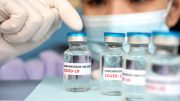

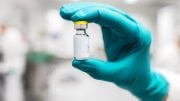
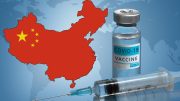
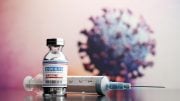
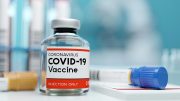
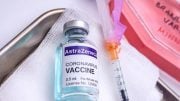
The risk group was 65 plus with 3 comorbidity’s, pointless testing on 18 year olds?
Was there a Placebo group?
Has not been tested on the high risk group of 65 plus with 3 comorbidity’s and with a Placebo group?
aol mail